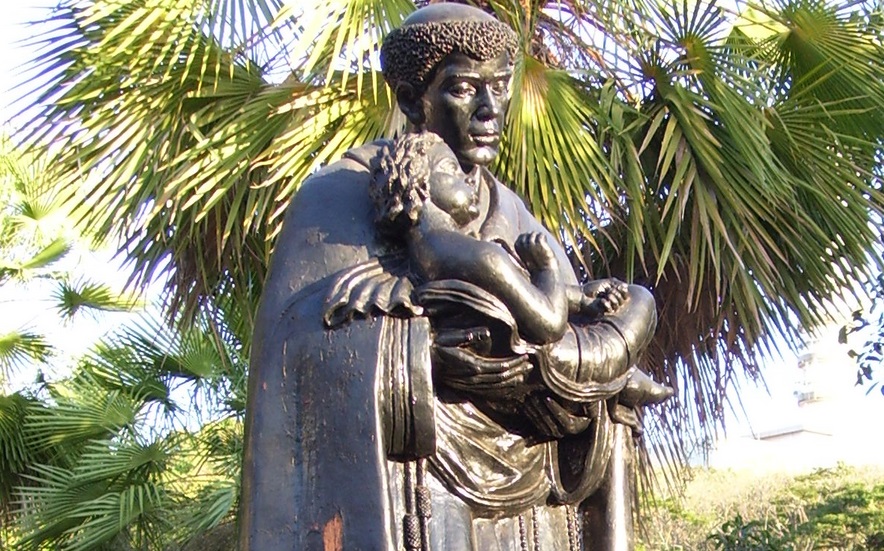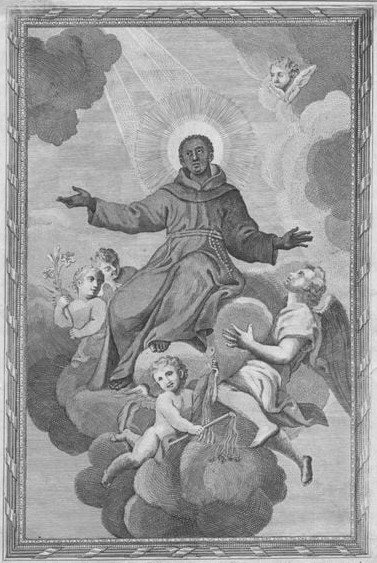Benedict was born in 1526 to Cristoforo and Diana Manasseri, who were slaves from Africa. Their family was taken from Africa to San Fratello, Sicily and they converted to Catholicism. They lived such an exemplary life, and fulfilled their duties so thoroughly, that their owner, in appreciation, granted freedom to Benedict when he was 18. He continued to work as a day laborer and shepherd, generously sharing his small wages with the poor and spending his free time in caring for the sick. Because he came from slavery, he was often the object of ridicule, which he bore patiently and cheerfully.
At the age of 21, he became acquainted with Jerome Lanze, a nobleman who left worldly desires to live under the rule of Saint Francis of Assisi. Benedict sold his few possessions, gave the money to the poor and joined the hermit life. He worked as the cook for the community but in 1564, the Pope disbanded independent communities, ordering them to join established religious Orders. Along with the others, he joined the Order of Friars Minor and was then moved to the Franciscan Friary of Saint Mary of Jesus in Palermo, Italy. He worked in the kitchen but upon the death of his director, against his will, he was chosen as the guardian of the friar at the age of 28, even though he could not read or write. After only 1 term, he was chosen as Novice Master with his counsel eagerly sought.
He helped the order adopt a stricter version of the Franciscan Rule of life and was deeply respected. He was infused with knowledge of the scriptures, and had an intuitive grasp of deep theological truths, which astounded scholars and aided him in the direction of souls.
He asked to be relieved of his post but reports of his sanctity spread throughout, and the monastery was constantly beset with visitors seeking direction, prayer, and healing. He never refused to see anyone although he would have preferred to live a hidden life.
As he grew older and was relieved of his offices, he returned to the humble duties of the kitchen. At the age of 63, after a short illness, at an hour and day he had predicted, he died and was buried with great solemnity in the common vault behind the sacristy of the church.
Immediately after his death, a vigorous following developed, and his veneration spread throughout Spain, Italy, and Latin America.
In 1611, King Phillip III of Spain, assumed the expense of moving his remains from behind the sacristy to create a magnificent new shrine situated on the left side of the altar of Saint Maria de Gesu.
He is the patron saint of all African missions, African Americans, Palermo, Sicily and Sicily.
His feast day is April 4.
For God’s Glory.


